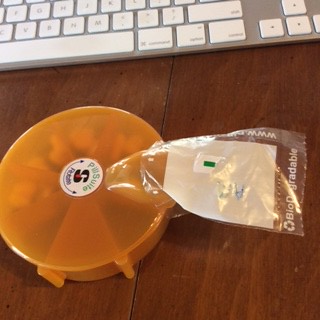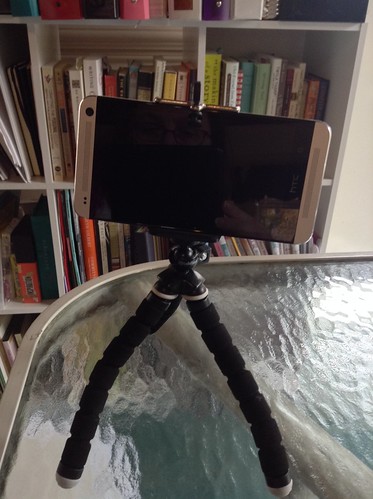“I have been given this product as part of a product review through the Chronic Illness Bloggers network. Although the product was a gift, all opinions in this review remain my own and I was in no way influenced by the company. “
Over the course of the past year, I’ve had the opportunity to test out a variety of different products aimed at helping us chronic pain patients find some pain relief. I’ve tried lotions and ointments that focus on easing the physical symptoms. I’ve tested products designed to soothe the emotional aspects of living with daily pain, like teas and aromatherapy diffusers. I’ve read books whose goal is to help patients be as educated and empowered as possible as they advocate for their own best healthcare. And I’m grateful for the ways that each product complements and amps up all the tools I currently have in my pain relief kit.
In addition to all of these pieces, for the past couple of months I’ve been testing something quite different: a wearable, drug-free, pain-management device called Quell. From the website:
“Quell is wearable technology that uses intensive nerve stimulation to provide widespread pain relief. It is designed to be worn on the calf, regardless of where you are experiencing pain, and stimulates your nerves in a way that is powerful enough to trigger the release of your body’s natural pain blockers. Pain is blocked at the spinal cord, which helps you feel widespread relief from your pain, not just relief in a specific part of your body.”
I’ve undergone a number of semi-invasive procedures like epidurals and nerve ablations (nerve burns) that work on pain at the level of the spinal cord. They work for a few months, but they are expensive, temporary, and pretty hard on your system. I’ve also been prescribed medications that attempt to interfere with your brain’s ability to sense pain. But their results vary, and they come with a number of unpleasant side effects. Quell is completely different.
Of course, as with everything I review here, I add the caveat that it is not a magic bullet, I still have pain even when I use it, and everyone’s results will vary. But my Quell unit has provided me with a level of pain relief I’ve not found anywhere else.
I received my unit back in September, when we were packing up 22 years of living in Georgia to move back to North Carolina, and I pretty much gave it an introductory baptism by fire. Because despite 4 years of not driving long distances on the highway, this time I had no choice; we had to get both cars to NC, so I had to drive one of them. This meant I couldn’t take any pain medicine until late in the day when we’d gotten to whatever hotel we were staying at that night. And of course my pain was fairly jacked up thanks to all the physical labor and emotional stress caused by the move.
So I put on my Quell that first morning and drove for about 4 hours. And when I got to the hotel I was so surprised; I still had pain, of course, but nowhere near the fiery, debilitating level of pain I was expecting given my current life circumstances. I was kind of stunned.
It would be nice if I could give you some hard and fast numbers, I know, a consistent, specific percentage of the decrease in my experience of pain. But because my amount of pain is fluid from one moment to the next, and my perception of my pain is personal and subjective, I can’t do that. But I can tell you that I almost always have a noticeable decrease in pain when I wear it, unless I’m having one of those flare-ups where nothing helps.
But what I can do is tell you that if you have the opportunity to test a Quell device, you definitely should.
Visit their website for more detailed product information.













